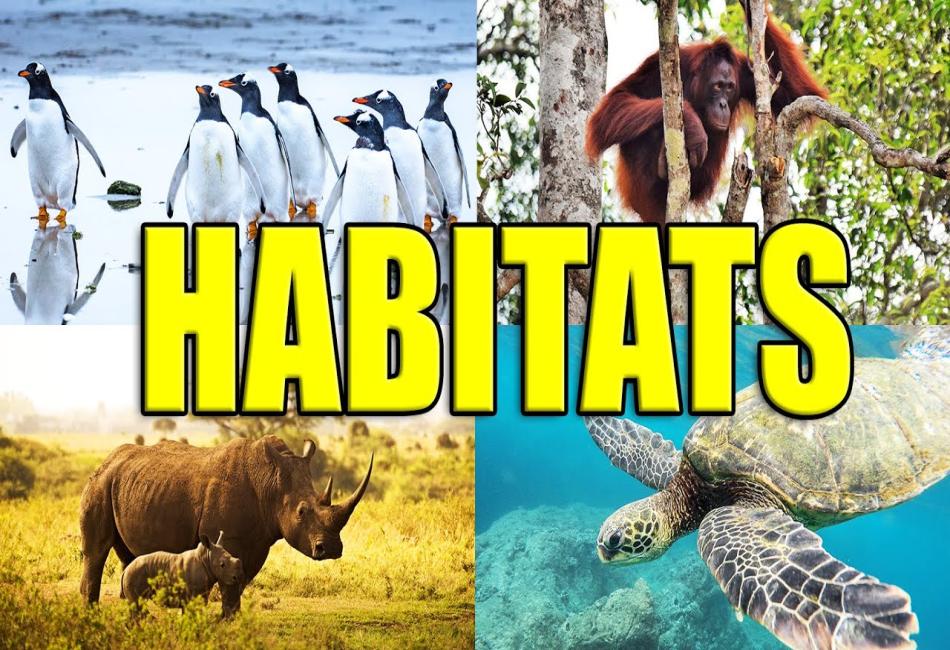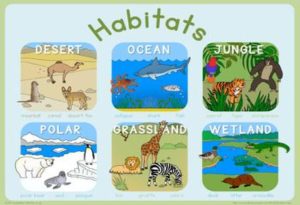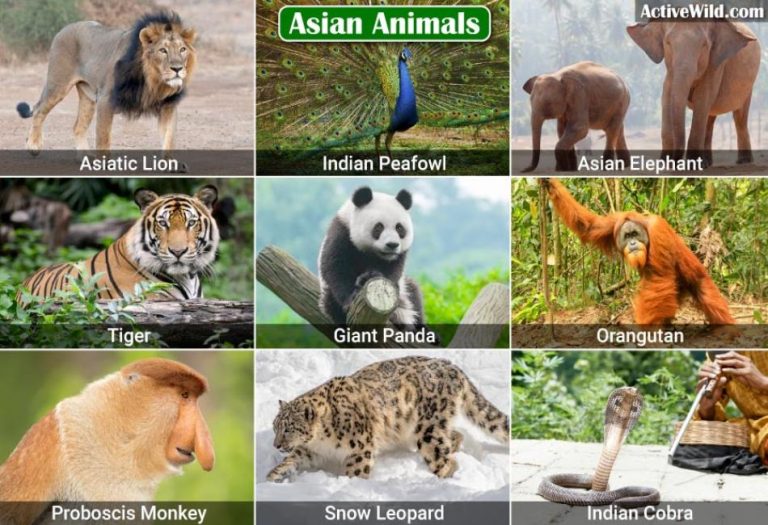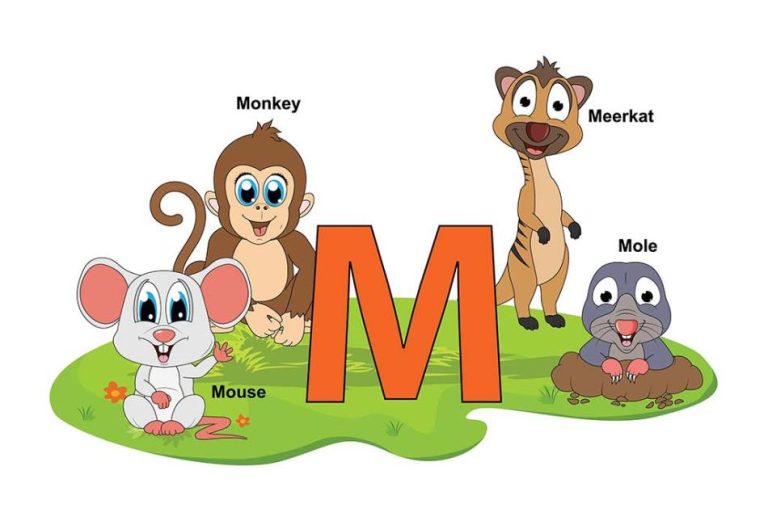Animal Habitats: Understanding Nature Diverse Homes
The natural world is a complex, interconnected system where every living creature occupies a specific niche. One of the mostimportant aspects of an animal’s life is its habitat—the environment where it lives, feeds, breeds, and seeks shelter. From the depths of the ocean to the peaks of towering mountains, animal habitats vary widely across the globe, each uniquely suited to the species that call them home.
In this in-depth article, we will explore what animal habitats are, the different types of habitats, how animals adapt to them, the threats these habitats face, and why habitat conservation is vital for the health of our planet.
What is an Animal Habitat?
A habitat is an area that provides all the essential conditions for a particular organism to survive. These conditions include:
- Food: The presence of plants, prey, or other resources.
- Water: Access to freshwater or other sources of hydration.
- Shelter: Protection from predators and harsh weather.
- Breeding Grounds: Safe places to reproduce and raise young.
For animals, a suitable habitat means survival. If any one of these conditions is compromised, it can threaten the existence of the species that depend on it.
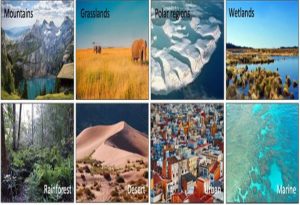
Types of Animal Habitats
Animal habitats can be broadly classified into several major types, each supporting distinct wildlife communities:
1. Forests
Tropical Rainforests
- Found near the equator (e.g., the Amazon, Congo Basin, Southeast Asia).
- Characterized by high rainfall, warm temperatures, and dense vegetation.
- Home to countless species such as jaguars, orangutans, toucans, tree frogs, and insects.
Temperate Forests
- Located in regions with four distinct seasons (e.g., North America, Europe, East Asia).
- Support animals like deer, bears, wolves, squirrels, and woodpeckers.
Boreal Forests (Taiga)
- Found in northern regions (Canada, Russia, Scandinavia).
- Dominated by coniferous trees, with animals like lynxes, moose, snowshoe hares, and owls.
2. Grasslands
Savannas
- Predominantly found in Africa, Australia, and South America.
- Characterized by open spaces with scattered trees.
- Support elephants, lions, zebras, giraffes, and antelope.
Temperate Grasslands (Prairies, Steppes)
- Located in central North America, Eurasia, and South America.
- Home to bison, prairie dogs, foxes, and numerous bird species.
3. Deserts
- Found in areas with extremely low rainfall (Sahara, Mojave, Gobi).
- Animals adapt by being nocturnal, storing water, or minimizing activity.
- Include camels, lizards, scorpions, and fennec foxes.
4. Tundra
- Found near the poles and at high altitudes.
- Characterized by permafrost, low vegetation, and cold temperatures.
- Hosts animals like polar bears, arctic foxes, caribou, and snowy owls.
5. Aquatic Habitats
Freshwater
- Includes rivers, lakes, streams, and wetlands.
- Home to fish, amphibians, insects, and birds like herons and ducks.
Marine
- Includes oceans, seas, and coral reefs.
- Supports whales, dolphins, sharks, sea turtles, coral, and countless fish species.
6. Mountains
- Offer varied habitats at different elevations.
- Home to species like mountain goats, snow leopards, eagles, and marmots.
7. Urban Habitats
- Man-made environments where some animals have adapted to human presence.
- Includes pigeons, raccoons, foxes, squirrels, and various rodents.
How Animals Adapt to Their Habitats
Animals develop special adaptations tht allow them to thrive in specific environments. These adaptations can be:
1. Physical Adaptations
- Thick fur in cold climates (polar bears).
- Webbed feet for swimming (ducks, otters).
- Camouflage for hiding (chameleons, tigers).
2. Behavioral Adaptations
- Nocturnal activity in deserts to avoid heat.
- Hibernation during winter (bears).
- Migration to avoid harsh seasons (monarch butterflies, birds).
3. Dietary Adaptations
- Specialized teeth for eating specific foods (koalas and eucalyptus leaves).
- Long necks to reach high foliage (giraffes).
These adaptations have evolved over millions of years, allowing species to exploit unique ecological niches.
The Importance of Animal Habitats
Healthy habitats support:
- Biodiversity: A wide range of species, ensuring ecosystem balance.
- Ecosystem Services: Clean water, pollination, pest control, and carbon sequestraion.
- Human Well-Being: Resources for medicine, food, and recreation.
Every habitat contributes to the Earth’s intricate web of life, and their health directly affects us.
Threats to Animal Habitats
Unfortunately, many animal habitats are under severe threat due to human activities:
1. Deforestation
- Logging, agriculture, and urban expansion destroy forests, endangering countless species.
2. Pollution
- Industrial waste, plastic pollution,and oil spills contaminate land and water habitats.
3. Climate Change
- Rising temperatures alter habitats, melting polar ice, increasing sea levels, and changing rainfall patterns.
4. Overfishing and Hunting
- Depletes fish stocks and threatens animals through poaching and illegal wildlife trade.
5. Habitat Fragmentation
- Roads and developments divide habitats, making it harder for animals to find food, mates, or migrate.
Conservation Efforts for Animal Habitats
To protect animal habitats, many global initiatives have been put in place:
- Protected Areas: National parks, wildlife sanctuaries, and marine reserves.
- Legislation: Laws protecting endangered species and regulating land use.
- Restoration Projects: Replanting forests, cleaning rivers, and restoring wetlands.
- Climate Action: Reducing greenhouse gas emissions to slow habitat loss.
- Community Engagement: Educating people on sustainable practices and involving them in conservation.
Organizations such as the World Wildlife Fund (WWF), Conservation International, and The Nature Conservancy play significant roles in these efforts.
How You Can Help
Even small actions can contribute to habitat conservation:
- Support sustainable products.
- Reduce, reuse, and recycle.
- Conserve water and energy.
- Support organizations working on habitat preservation.
- Spread awareness about the importance of protecting animal habitats.
Interesting Facts About Animal Habitats
- The Amazon Rainforest produces 20% of the world’s oxygen.
- Coral reefs cover less than 1% of the ocean floor but support 25% of marine species.
- The Sahara Desert is home to more than 70 different mammal species.
- Arctic tundra soil stores vast amounts of carbon, crucial for climate regulation.
Conclusion
Animal habitats are much more than just places where animals live—they are complex, interdependent systems that support life on Earth. Understanding the diversity of these habitats, how animals adapt to them, and the threats they face is crucial to preserving biodiversity for future generations.
FAQ: Animal Habitats – Understanding Nature’s Diverse Homes
Q1: What is an animal habitat?
An animal habitat is the natural environment where a species lives, including its food sources, shelter, water, and breeding areas.
Q2: What are the main types of animal habitats?
The main habitats include forests, grasslands, deserts, tundras, freshwater areas, marine environments, mountains, and urban spaces.
Q3: How do animals adapt to their habitats?
Animals develop physical, behavioral, and dietary adaptations—like camouflage, hibernation, and specialized diets—to survive in their specific environments.
Q4: Why are habitats important?
Habitats support biodiversity, provide ecosystem services like clean air and water, and maintain balance in nature.
Q5: What threatens animal habitats?
Major threats include deforestation, pollution, climate change, overhunting, and habitat fragmentation caused by human activity.

